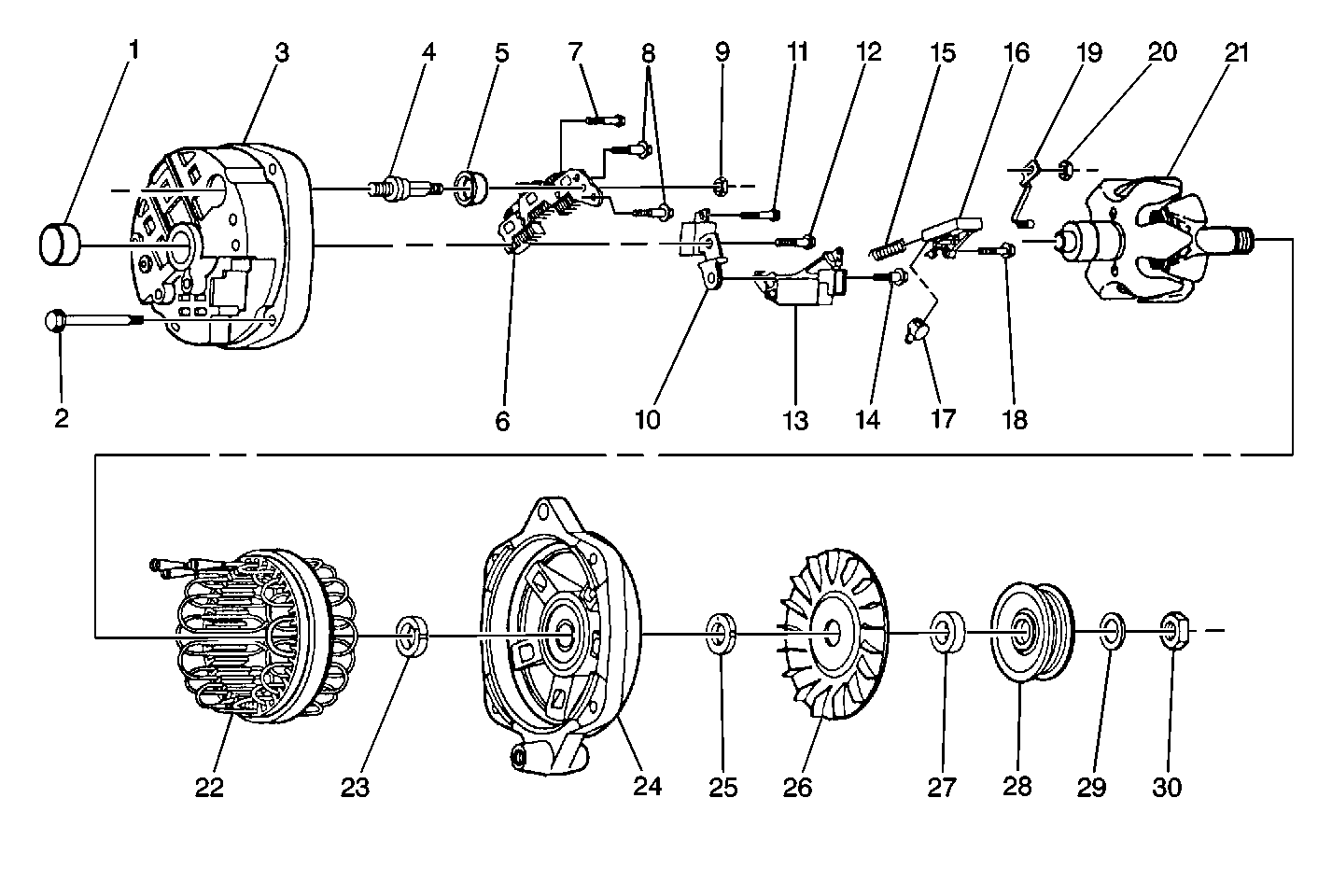This vehicle's charging system uses one of two different
generators. Domestic vehicles utilize either the Delphi CS-144 (KG9) or the
Valeo A13VI+ (K68) generator. Vehicles with rear air conditioning (C34) require
the higher output Delphi CS-144 (140 A), while vehicles without rear air conditioning
come equipped with the Valeo A13VI+ (105 A).
Delphi CS-144 (KG9)
The CS-144 generator uses the following components:
| • | An internal, temperature compensated voltage regulator with built-in
fault detection |
| • | A rotor with slip rings and brushes |
| • | An external fan is used for cooling the internal components. |
The voltage regulator incorporates a Load Response Control (LRC) to
ramp-up to additional loads and reduce fluctuations in the output voltage.
These generators use three wiring connections, in addition to the ground path
through the generator bracket:
| • | The output BAT terminal connection |
| • | The L terminal connection |
| • | The S terminal connection |
The output BAT terminal connection is connected directly to B+ voltage
and is hot at all times. It is through this terminal that the generator provides
voltage and current to charge the battery and operate the vehicle electrical
components. This connection is necessary at start-up because it provides initial
field current from the battery to begin generator operation. The L terminal
is connected to the charge indicator circuit which is grounded through the
voltage regulator whenever the generator is stopped or the charging voltage
is too high or too low. When the charge indicator circuit is grounded, the
charge indicator in the instrument cluster will light when the ignition switch
is in the RUN position. At start-up the ignition switch voltage in the charge
indicator circuit at the L terminal causes the voltage regulator to turn the
field current on. When the generator is operating normally, the ground from
the charge indicator circuit is removed and the charge indicator should no
longer be lighted. The S terminal is connected to the voltage sense circuit
that is connected to another point in the B+ circuit for the desired voltage
control, and is also hot at all times. If this circuit is disconnected for
any reason, the generator reverts to internal voltage for control. High resistance
in this circuit may cause the generator to produce an incorrect or erratic
system voltage.
CS144 Generator


